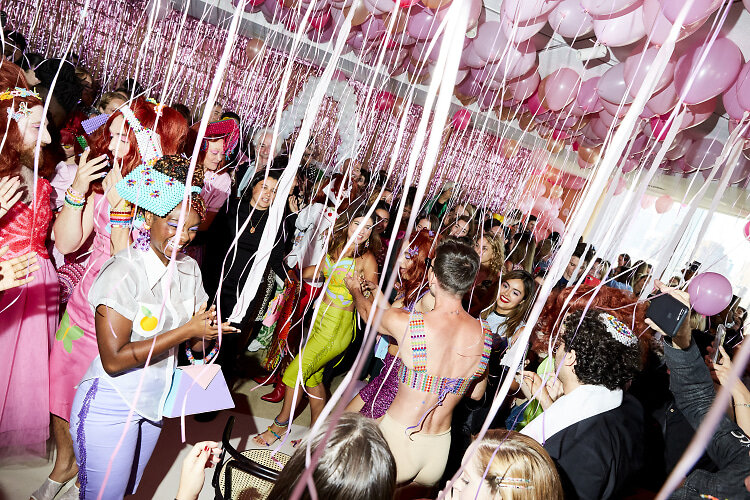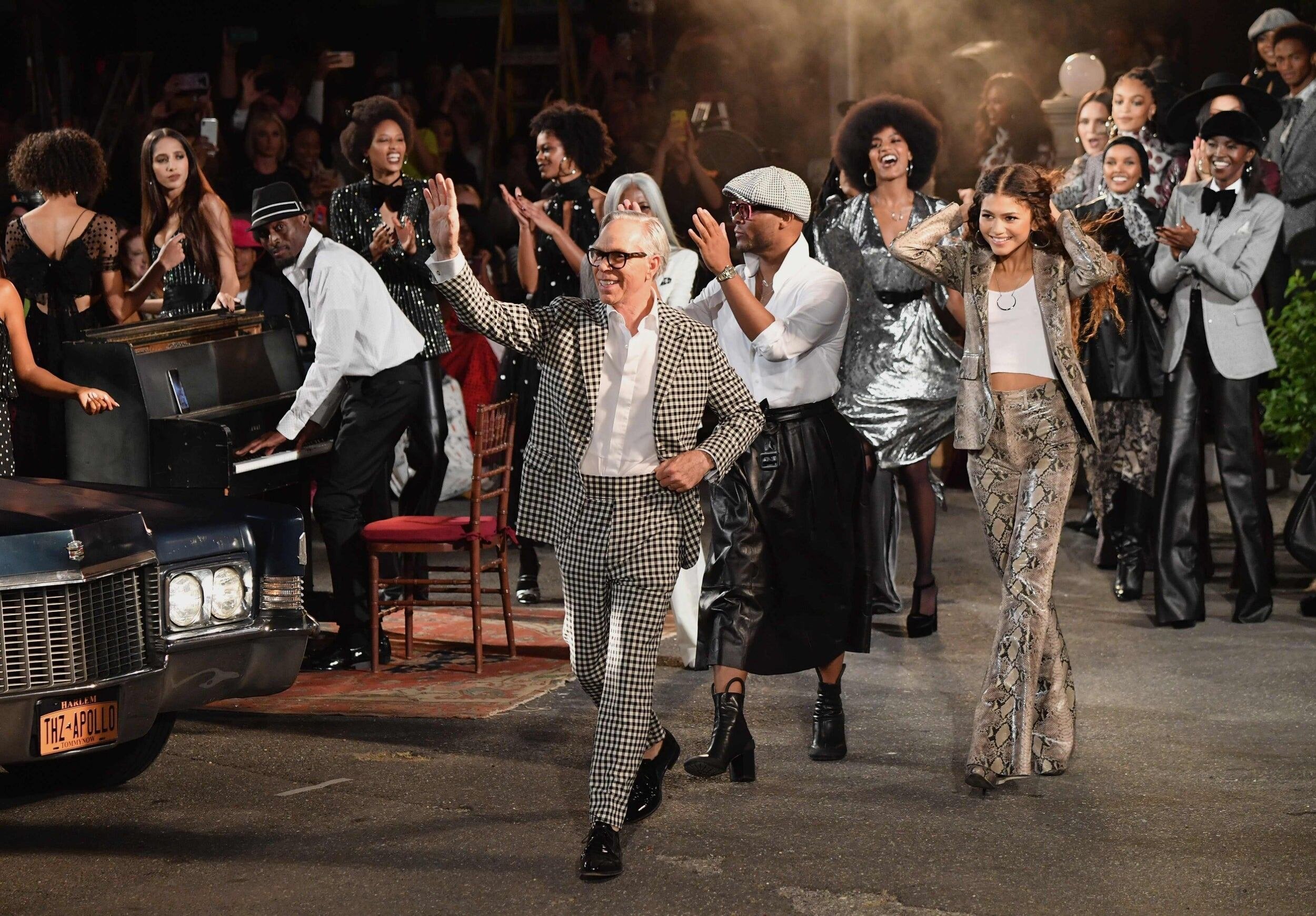The latest season of New York Fashion Week came to an end with more than seventy presentations by a diverse group of designers led by Tom Ford, the CFDA’s the new chairman. For the most part, the designers of the NYFW roster focused on creating memorable experiences and forging an emotional connection with the public, both present and online. The recurring theme in the collections for Spring 2020? Nostalgia.
Nostalgia is the feeling of sentimental longing for past situations and events. It occurs in periods of transition allowing us, momentarily, to relive "the good times," even when we know these times won’t come back.
Catherine Holstein, creative director of Khaite, was inspired by the summers of her childhood. She used to spend the holidays at her grandmother's house in Woodstock, Vermont, to which she recently returned for the first time after 25 years. The house, she said, remained intact with the same furniture and textile from the sixties, same elements she translated into the set and the collection. "It's a revisit of my childhood, a revisit of my life," she explained. In an innocent and melancholic mood, the models carried head pieces made out of pearls and Swarovski crystals, just as Holstein did as a child when playing dress-up with her grandmother's wardrobe and necklaces.
The headpieces seen at Khaite SS20 were inspired by Catherine Holstein’s memories of playing with her grandmother’s necklaces.
Until the seventeenth century, nostalgia was actually considered a mental disorder, but modern studies have proven that nostalgia is a crucial tool for human existence. Longing for our own past is known as personal nostalgia. It doesn’t mean we want to return in time; rather, we want our past to come back to us. We really want to bring the best of the past into our present.
And so did designer Susan Korn for her brand, Susan Alexandra. Korn hosted a Bat-Mitzvah at the popular Public Hotel. Known for her colorful beaded accessories and jewels, the designer described her first RTW collection to Vogue as the pieces she would have liked to have at thirteen and would still own today. Close friends, family and creatives of the Lower Manhattan scene were models. “The theme of my own bat mitzvah was ‘passion for fashion’ and years later I'm here as a designer in New York, and this occasion marks my true transition to womanhood,” said Korn. Nostalgia is not based on exact memories, but on the emotional state we set to a period of time in our life.
Susan Alexandra’s Bat Mitzvah-themed presentation during NYFW SS20.
Nostalgia also makes us recognize the path we have taken, and assess what we’ve gained and lost along the way. Mark Thomas and Thomas Cawson for Helmut Lang and designer Norma Kamali, created their most recent collections around the status-quo they established long ago. Norma Kamali re-released pieces that made her popular in the eighties. Among them are the Puli jumpsuit, the Dirndl skirt, and the Modern Sculpture dress. Opting for the reissue of pieces created by the Austrian designer and founder of the brand, Helmut Lang, Thomas and Cawson offered a show attracting loyalists and new fans with the distinctive modern and clean Lang designs from the mid-1990s. Although our brain responds to novelty with a high dose of dopamine, we yearn for the stability that places, experiences, and familiar objects guarantee.
In times of instability and constant transformation, our mind refers to the past to face reality. Dissatisfaction with our present makes us prefer distant eras. Historical nostalgia is the desire to escape to a romanticized idea from previous times. While personal nostalgia can help us deal with difficult times, historical nostalgia causes greater dissatisfaction in relating to others.
African-American culture, specifically music, was present at both Pyer Moss and Tommy Hilfiger. The legendary Apollo Theater, a very important cultural center within the African-American community, was the setting that Hilfiger chose to show his most recent collaboration with actress and singer Zendaya. According to both, the collection celebrates the Funk of the seventies following the pattern of the previous show that cited Disco as inspiration. A stage disguised as a street out of Harlem, musicians, and a Cadillac welcomed attendees.
Looking towards the past from our subjectivity leads us to contemplate a simulation, not a memory of the past. Funk emerged during the Civil Rights movement when there was a lot of racial tension. In a time of music segregation between White-pop and Black-pop, Funk was the counterculture. Although the presentation did not show the other side of the harsh reality of those times, it added a cheerful touch within a fantasy, opting into celebrating Black influence in fashion.
Tommy Hilfiger, Zendaya, and models at the SS20 show at the Apollo Theater in Harlem.
In Flatbush, the host of the NYFW Sunday mass was Kerby Jean-Raymond of Pyer Moss. “Sister,” the third installment of the trilogy “American, Also” forced the fashion crowd to cross the bridge to Brooklyn, home of the famous Kings Theater. The collection was a tribute to singer-songwriter Sister Rosetta Tharpe, considered the Godmother of Rock ‘n’ Roll, and of whom very few know of her important role in the shaping of the genre’s identity and characteristic sound we know of today.
Any video of Tharpe on YouTube is enough evidence to show how influential she was in Elvis’s career. Jean-Raymond told Vogue, "I wanted to explore what that aesthetic might have been like if her story had been told." Throughout the presentation, seventy women and men sang soul, R&B, hip hop and gospel, and Casey Gerald delivered his sermon. Gerald opted for an encouraging political speech, referencing the anniversary of slavery in America, concluding in a hopeful message of redemption.
The Pyer Moss show was a tribute to Sister Rosetta Tharpe, considered as the Godmother of Rock ‘n’ Roll.
Memories spark approach orientation, increase optimism, and evoke inspiration, and since these stay our minds, they act as a resource of self-worth regardless of how demanding out present circumstances are. People who speak fondly of the past are better able to cope with adversity or loss, and have a more positive outlook for the future.
As one of the final acts of NYFW, Marc Jacobs orchestrated a show at Park Avenue Armory, and paid respect to 9/11 and the Twin Towers that fell eighteen years ago. Jacobs dedicated the event to the victims and a close friend among them. The designer also took the opportunity to remember those who have left us, such as Karl Lagerfeld and Yves Saint Laurent: "You keep them alive by honoring them, copying them, crediting them and letting them continue to inspire you," he said to WWD’s Bridget Foley. With Doris Day’s "Dream A Little Dream of Me" playing in the background, a sea of models flooded the audience, each in outfits that seemed to embody a different character in them. Jacobs created an event overflowing with cathartic emotions (there were many happy tears, in fact), something that within fashion and NYC, we’ve longed for.
Yenia Hernández Fonseca has experience in visual presentation and exhibition design for some of the biggest luxury brands. As a writer, Yenia explores the relationship between trends in retail, experiential marketing and fashion psychology from Mexico City.
















Why the American fashion capital and its millennial consumer seem to be obsessed with nostalgia, how The Row outdid itself again, and the controversial element in Raf Simons’s looks…